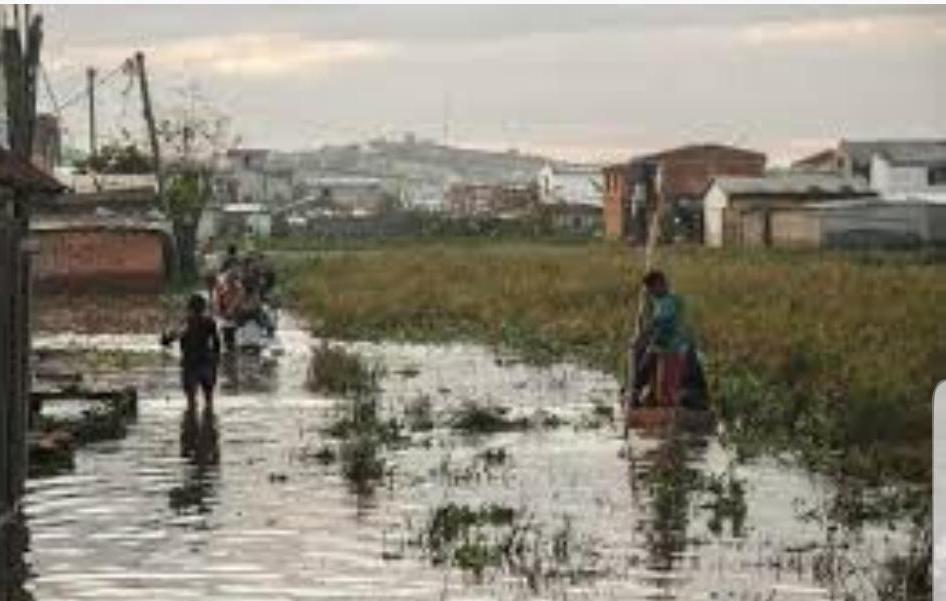By PRIORITY MUFUNGI
Cyclones are disturbances of the lowest level of the earth’s atmosphere which is subdivided into five distinctive elevation‐dependent zones or layers. Cyclones are born and die in a layer called troposphere. When thunderstorms develop over tropical oceans, they may lead to the development of a tropical cyclone.
A cyclone is an area of closed, circular atmospheric motion rotating in the same direction as the Earth. There are two variables of cyclones named tropical and mid-latitudes cyclones.
Occur as a result of high wind speeds, storm surge, and flooding. Winds associated with cyclones obtain speeds ranging from 119 kilometers per hour (74 miles per hour) to greater than 249 kilometers per hour (155 miles per hour). When a cyclone comes ashore in the Northern Hemisphere winds rotate counterclockwise. In addition, the center of the cyclone is moving at a certain velocity. Tropical cyclones are warm‐core storm systems that form almost exclusively in tropical regions around the globe.
In this year, two cyclones has emerged namely Cheneso and Freddy having heavy rains throughout Madagascar, Malawi , Mozambique and some parts of Zimbabwe. Cyclone Freddy has made history to infant level as pupils has to evacuate from school studies so as to stay safe last month in Zimbabwe. Students have an exit for some days at home as the ministry of Education published a preventative measure on primary and secondary education.
Tropical Cyclone Freddy has broken records for the duration and strength of tropical storms in the southern hemisphere. Reports from news sources said that the cyclone hit central Mozambique on Sunday and knocked down communications and electricity supply in the area and more than one hundred and seventy one thousand people were affected after the cyclone hit southern Mozambique last month, killing 27 people in Mozambique and Madagascar. The UNICEF chief executive said Freddy made landfall with sustained winds of nearly 150 kilometers per hour. The cyclone caused “severe damage and cutting off children and families from critical services.” The wind was very strong into the night. There is a lot of destruction, trees fallen down, roofs blown off.
Malawian authorities were expecting the cyclone to pass near the southern tip of the country by evening, bringing torrential rains and flooding. Tropical Cyclone Freddy developed on 6 February off the northwest Australian coast, before tracking thousands of kilometers across the South Indian Ocean towards southeast Africa.
Tropical Storm Cheneso made landfall in the north of Antalaha Town in Sava Region, on the north-eastern coast of the island, at 10.45am (local time) on 19 January, according to Meteo Madagascar. After landfall, the storm headed south-west, with average winds of 90 km/h and wind gusts up to 120 km/h.
It is believed that the trajectory of the storm is headed towards Mozambique and the direction and strength is yet to be determined that it is unpredictable because it lacks back up communication system for warning and an emergency for evacuation plans expect there is no way of preparing for the unknown. It has more risk as the eye of the storm moved there and hits back for the second time.
After the passage of tropical cyclone CHENESO on 19-23 January, the figures of affected people continue to increase as the water level is rising in the South-Western parts of the country. Access to the affected people remains a challenge. At least 33 people died and 20 others are reported as missing across 17 regions of Madagascar, after floods, landslides, and strong winds caused by the passage of tropical cyclone CHENESO on 19-21 January. The National Bureau of Risk and Disaster Management (BNGRC) reports there are more than 34,100 temporarily displaced individuals, as the number of affected people has reached 90,870.
To date, both cyclones have taken more than two hundred people, tens of thousands having been displaced by heavy rains that triggered floods and mudslides in southern Africa. However some areas suffered from cyclone depression as there were no rains in March.

